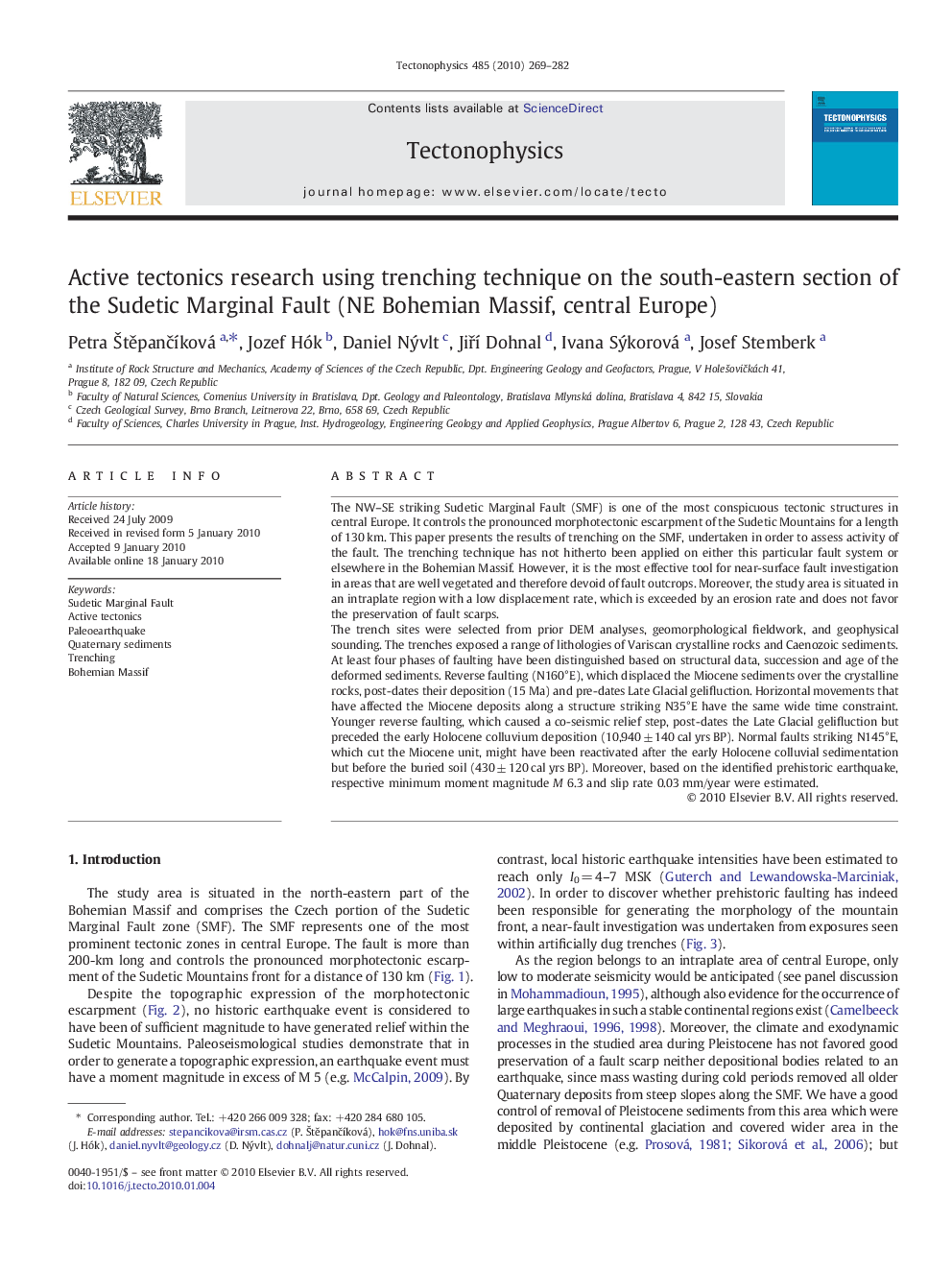| Article ID | Journal | Published Year | Pages | File Type |
|---|---|---|---|---|
| 4693652 | Tectonophysics | 2010 | 14 Pages |
Abstract
The trench sites were selected from prior DEM analyses, geomorphological fieldwork, and geophysical sounding. The trenches exposed a range of lithologies of Variscan crystalline rocks and Caenozoic sediments. At least four phases of faulting have been distinguished based on structural data, succession and age of the deformed sediments. Reverse faulting (N160°E), which displaced the Miocene sediments over the crystalline rocks, post-dates their deposition (15 Ma) and pre-dates Late Glacial gelifluction. Horizontal movements that have affected the Miocene deposits along a structure striking N35°E have the same wide time constraint. Younger reverse faulting, which caused a co-seismic relief step, post-dates the Late Glacial gelifluction but preceded the early Holocene colluvium deposition (10,940 ± 140 cal yrs BP). Normal faults striking N145°E, which cut the Miocene unit, might have been reactivated after the early Holocene colluvial sedimentation but before the buried soil (430 ± 120 cal yrs BP). Moreover, based on the identified prehistoric earthquake, respective minimum moment magnitude M 6.3 and slip rate 0.03 mm/year were estimated.
Related Topics
Physical Sciences and Engineering
Earth and Planetary Sciences
Earth-Surface Processes
Authors
Petra Å tÄpanÄÃková, Jozef Hók, Daniel Nývlt, JiÅà Dohnal, Ivana Sýkorová, Josef Stemberk,
